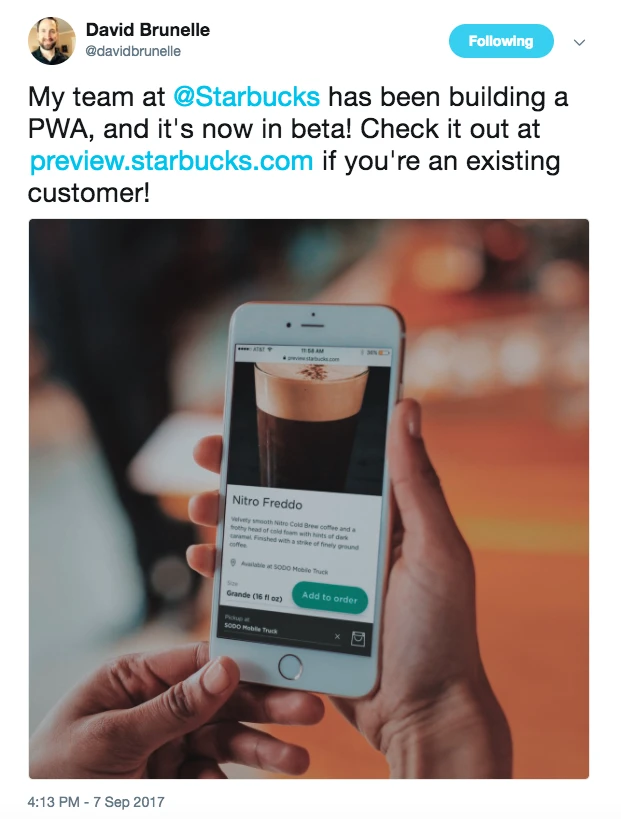Brands We Love Are Building Progressive Web Apps
by Jillian MacNulty | Last Updated: Sep 27, 2017
by Jillian MacNulty | Last Updated: Sep 27, 2017
Just a few months ago, one of our Customer Success Managers, Lauren, presented to the whole Lumavate team about Progressive Web Apps (if you need a little crash-course, we’ve got an infographic for that). She showed us Google’s go-to PWA example, the Airhorner App.
While I (to my family and friends’ embarrassment) have found numerous occasions to use this app in everyday life, I’d venture to say it’s not all that useful for everyone. When it comes to displaying PWA capabilities, it gets the job done: It’s beautiful on desktop, tablet and mobile; it prompts you to install it to your homescreen; its interface fills the entire screen for a fully app-like experience. But although Airhorner shows base PWA functionality, we’ve noticed a few big-name brands that are showcasing the true power behind PWAs. Click on the links below to explore them on your own!

The Starbucks web team released this Beta version of the Starbucks PWA just a few weeks ago, and it’s allowing customers to skip the line and the download. This PWA mirrors the current Starbucks native app almost completely, with mobile ordering, mobile pay, and account management functionalities available. One of the coolest things about the coffee giant’s PWA? It’s .4% the size of its native app counterpart, freeing up lots of your precious storage space. We've followed along with the development via Starbucks Web Development Manager, David Brunelle, who first announced the Starbucks PWA via his Twitter account.
Lyft is proving that PWAs can easily displace native apps without having users skip a beat. It looks nearly identical to Lyft’s native app, and runs just as smoothly. My favorite part? When you access it for the first time, it prompts you to enable push notifications, making for a truly app-like experience.
This is the PWA you’ve been using without even knowing it was a PWA. Twitter released their “Lite” mobile version earlier this year without too much fanfare. Users may have noticed some quicker load times (even in low service areas), but the true power of this PWA is in the “Data Saver” mode. When you enable this setting, images are blurred until you tap to load them fully, reducing data usage up to 70%.
These three examples are proving a few things about PWAs: First, big brands are catching onto this powerful mobile tech. Second, PWAs have the ability to displace native apps, since each of these apps mirror their native counterparts almost identically. And lastly, the benefits to users (less storage space, faster load times, no download, push notifications) are almost as great as the benefits to the businesses (better UX, higher adoption rates, happier customers).